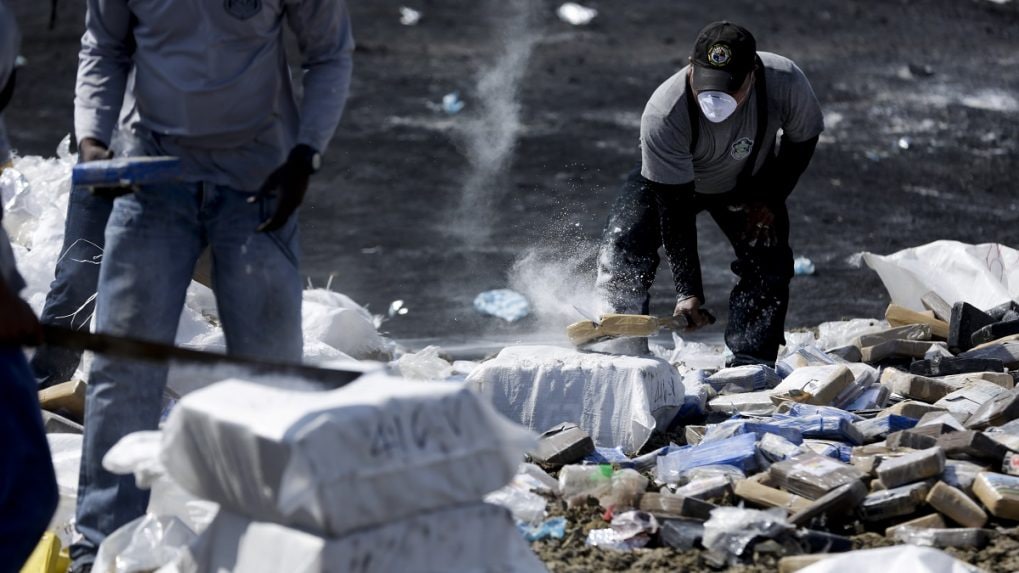
The Delhi Police recently busted a racket of sale of counterfeit drugs — not just any drugs but lifesaving chemotherapy drugs. The modus operandi involved technicians from a cancer hospital supplying genuine empty vials of cancer drugs. These were filled with an antifungal drug and sold as anti-cancer injections through a pharmacy shop.
The pharmacy sold several of them. Prominent among these cancer drugs were Opdyta, Keytruda and Infinzi. Opdyta is used for the treatment of cell lung cancer, kidney cancer, head and neck cancer and liver cancer. The cost of a genuine drug is ₹21,500 per vial. Keytruda is used in the treatment of biliary tract cancer, breast cancer, cervical cancer, and the genuine drug sells at ₹2,02,390 for a 100 mg vial. Infinzi is used for the treatment of urinary bladder cancer and sells at ₹1,05,000 per vial.
India has seen a lot of despicable, vile crimes. This, selling to cancer patients suffering from a life-threatening ailment and seeking treatment, being sold vials of medicines filled with an antifungal drug (sells for ₹12.50 a vial and is used for the treatment of fungal infections) which has multiple side effects even for a healthy person should rank as one of the worst. This raises the larger question of the problem of spurious, counterfeit products being sold in the market especially in the pharma sector.
Counterfeiting
& IAC
As per an OECD report, Trends in trade in counterfeit and pirated goods 2019, the value of imported fake goods worldwide based on 2016 customs seizures stood at US$ 509 billion — which works up to 3.3 percent of global trade. It must be noted that this figure does not include domestically produced and consumed fake or pirated goods, or goods distributed through the internet.
The ASPA-CRISIL report estimates that almost 25% to 30% of all products sold in the country are fake/spurious. The break up among the various products being apparel (31%), FMCG ( 28 ), Automotives ( 25%), Pharmaceuticals (20%), consumer durables ( 17%) and agrochemicals ( 16% ).
E-Commerce and globalisation have made the fight against counterfeiting even more challenging. What the survey has shown is that in most cases the consumer is not aware that he is purchasing a counterfeit product.
The manufactures of original products are hit — both in terms of reputation and revenue. The government is also impacted by loss of revenue — for goods so sold are outside the tax net. As a FICCI-CASCADE study has revealed, an aspect which has been given little attention is the consequential loss of jobs — legitimate employment opportunities get impacted.
Specifically in the context of counterfeiting, pharma products arguably pose the greatest challenge to health and well-being. The World Health Organization’s Global Surveillance and Monitoring System Report for Substandard and Falsified Medical Products 2017 has claimed that 10.5% of the medicines which are sold in middle and lower-income countries (India has been included) have been reported to be counterfeit.
Consumers fall prey to spurious products invariably because they are cheaper than the original — little realising the health hazards which they are putting themselves into. Unfortunately, in segments like apparel, leather goods, they purchase it despite knowing that it is a look alike.
Consumer awareness is critical for realisation to dawn of the enormous damage purchasing such spurious goods cause to the economy. Industry needs to actively engage with the enforcement authorities to alert them of the sale of spurious goods. Technological solutions like tamper proof packaging, holograms, QR codes should be used extensively.
India does have strong IP laws. Further in the case of sale of spurious drugs, the Drugs and Cosmetics Act 1940 categorically stipulates that any drug which is adulterated or spurious and likely to cause the consumer’s death or harm is punishable with imprisonment for a term of up to seven years which can extend to life imprisonment and also a fine of not less than ten lakhs or three times the value of the drugs seized.
Section 274 and 275 of the Indian Penal Code and the Bharatiya Nyaya Sanhita provide for punishment for adulteration of any drug or medical preparation intended for sale which lessen its efficacy or make it noxious. Such offences are deemed to be non-cognizable and non-bailable.
The punishment prescribed though is paltry — imprisonment which may extend up to six months or a fine which may extend to ₹5000. Hopefully in the present case the Delhi police will act swiftly and initiate prosecution. The Court should ensure that the case gets decided early. The harshest of punishments should be imposed on the seven persons arrested who are said to have sold more than 7000 such vials to unsuspecting victims.
— The author, Najib Shah, is former Chairman, Central Board of Indirect Taxes & Customs. The views expressed are personal.
(Edited by : C H Unnikrishnan)
First Published: Mar 18, 2024 10:10 AM IST




















